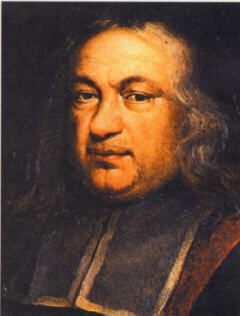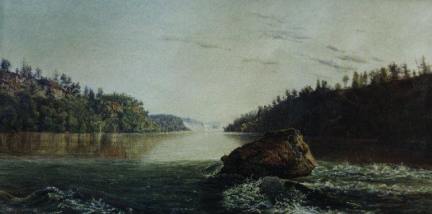Perfect magic cubes
What is the smallest possible perfect cube?
Martin
Gardner in 1988 (Tulsa, Oklahoma, 1914 - Norman, Oklahoma, 2010)
Nobody had succeeded to answer the question “Is there a perfect magic cube of order 5? No one knows” asked and popularized by Martin Gardner in Scientific American (1976) and in his book Time Travel and Other Mathematical Bewilderments (1988).
In November 2003, with my German friend Walter Trump, we constructed the first perfect magic cube of order 5, the smallest possible perfect cube.
|
First perfect magic cube of order 5, by
Trump & Boyer, 2003.
|
It will be impossible to construct a perfect cube smaller than order 5. None of the four existing standard magic cubes of order 3 is perfect, and the American mathematician Richard Schroeppel in the Artificial Intelligence Memo of the MIT (1972) proved that a magic cube of order 4 cannot be perfect.
 Pierre de Fermat (Beaumont de Lomagnes 1601 – Castres 1665)
Pierre de Fermat (Beaumont de Lomagnes 1601 – Castres 1665)
More than three centuries before, in 1640, Pierre de Fermat sent Mersenne a nearly perfect magic cube of order 4, with 64 magic lines: Fermat made a mistake announcing 72 magic lines in his cube, but 64 remains an excellent result compared to the needed 76 theoretical magic lines of a perfect magic cube of order 4 that we know now to be impossible.
Nearly perfect magic cube of order 4, by Fermat, 1640.
(click
on the image to enlarge it)
Schroeppel proved also, using algebra and combinatorial thinking, that if a perfect magic cube of order 5 exists, its center must be 63 : the center of the Trump-Boyer cube is of course 63.
Some explanations about the construction method used for our cube. We first computed a large number of auxiliary cubes of order 3. These auxiliary cubes are "central symmetrical", meaning that all their 13 alignments of 3 numbers going through the center have x + 63 + y = 189. These auxiliary cubes have some other partial magic characteristics: 29 of the 49 different possible alignments (including 14 of the 18 diagonals and all 4 triagonals) have already the same sum = 189. You can check these characteristics, looking at the central cube of order 3 included in our magic cube of order 5. Then, using these auxiliary cubes, we tried to fill, always by computer, the 53 - 33 = 98 missing numbers mainly using complementary numbers x + 189 + y = 315. That's why you can see a lot of different symmetries in our cube.
We ran five computers for several weeks before finding the first solution. With this method, it was very easy to find cubes of order 5 with 26 magic diagonals. More than 1500 cubes with 28 magic diagonals were found before finding our first cube with 30 magic diagonals. We used more than 80,000 different auxiliary cubes of order 3 before finding this first solution.

Two months before this cube of order 5, Walter Trump constructed the first perfect cube of order 6, using in its center an auxiliary cube of order 4.
Previously, the smallest known perfect cubes were of order 7, for example Frost’s cube (1866).
In December 2012, H. B. Meyer, Germany, proved that "centralsymmetric" perfect magic cubes of order 5 are impossible: see www.hbmeyer.de/backtrack/mq5/eq5x5x5symm.htm
What is a "perfect" magic cube?
The terminology used in this web site for the "perfect" multimagic cubes, is the most commonly used: a perfect magic cube is a magic cube with the additional property that each square is magic (every diagonal is magic, not just the triagonals).
Definition used for example by Martin Gardner (Scientific American, January 1976), by William H. Benson and Oswald Jacoby (Magic Cubes: New Recreations, 1981), and also by Clifford A. Pickover (The Zen of Magic Squares, Circles and Stars, 2002). It is also used in Eric Weisstein’s World of Mathematics at http://mathworld.wolfram.com/PerfectMagicCube.html.
For multimagic cubes, it means for example that each square of the 32nd-order perfect bimagic cube is bimagic, and that each square of the 256th-order perfect trimagic cube is trimagic.
There is another definition of a "perfect" cube, with supplemental properties of pandiagonality to get, defined by John R. Hendricks. The above "perfect" cubes are then no more called perfect, but "diagonal" cubes. See the Perfect Magic Cube page nicely done by Harvey D. Heinz.
What are the first published perfect cubes?
|
Order |
Inventor |
Country |
Date |
|
Perfect magic cube impossible |
|||
|
Nearly perfect, by Pierre de Fermat |
France |
1640 |
|
|
Perfect impossible, proved by |
USA |
1972 |
|
|
Walter Trump - Christian Boyer |
Germany - France |
Nov. 2003 |
|
|
Walter Trump |
Germany |
Sept. 2003 |
|
|
7* |
Reverend Andrew H. Frost |
England (1) |
1866 |
|
Gustavus Frankenstein |
USA (2) |
1875 |
|
|
9* |
Charles Planck |
England |
1905 |
|
Li Wen |
China |
1988 (3) |
|
|
11* |
Frederick A. P. Barnard |
USA |
1888 |
|
William H. Benson |
USA |
1981 |
|
|
... |
... |
... |
... |
|
8192** |
Christian Boyer |
France |
2003 |
(*) These cubes have supplemental characteristics of pandiagonality
(broken diagonals and/or broken triagonals also magic).
(**) This cube has supplemental multimagic
characteristics
(again perfect magic when its numbers are squared or cubed or raised to
the 4th power).
(1) And also
India: Frost was English, but was
at that time a missionary in Nasik, India.
(2) And also Germany:
Frankenstein was born in Germany, and was 2-years old when his family moved
to Cincinnati, USA.
(3) Li Wen sent us this cube in Dec. 2003. He had never published it before.
Li says that he had built it in 1988.
The first perfect cube published is of order 7, and was constructed by Rev. A. H. Frost, M.A. of St. John's College, Cambridge. Frost had been a missionary in a city named Nasik in India. Thus, his cube is called a "Nasik cube", and was published in 1866, in an English scientific magazine, The Quarterly Journal of Pure and Applied Mathematics.
In his Time Travel book, Martin Gardner thought that the first perfect cube of order 7 had been published by Harry Langman in 1962, in his book Play Mathematics (Hafner Publishing Company). Gardner was wrong, since we have found Frost's cube constructed in 1866, nearly one century before. Harry Langman was a Doctor of Philosophy of Columbia University, and has been Professor of Mathematics and Department Chairman in three educational institutions.
In this original text, you will read the easy construction method used. Harry Langman was very modest: "We shall content ourselves with giving an illustration of a seven-cube". We will replace by: "We shall delight ourselves..."
The first published perfect cube of order 8 was constructed by Gustavus Frankenstein. It was published in an old American local newspaper, The Cincinnati Commercial, March 11th, 1875. So this old newspaper is very difficult to find and locate. And, as far as we know, the associated text has never been republished in any other book or article. Good news, we have found the original newspaper,
and you can now read it and download the cube from this site:
In this original text, you will read what G. Frankenstein said about his cube: "This discovery gives me greater satisfaction than if I had found a gold mine under my door-sill; and it is delight like this that makes poverty sweeter than the wealth of Craesus."
And he continued: "Perhaps the thing has been done before." We are nearly sure, dear Gustavus, that the thing had not been done before for the order 8! But sorry, the thing has been done before for the order 7.
This Cincinnati Commercial reference is reported for example in:
Gustavus was also a painter, like his brothers, as reported in his biography from the Springfield Museum of Art or in his other biography from AskART (accessible freely every Friday of the week).
Gustavus Frankenstein's painting

Thirteen years after Frankenstein, another American, Frederick A.P. Barnard, publishes a pandiagonal perfect magic cube of order 8, with two other cubes of order 11. See these cubes in the page dedicated to pandiagonal perfect magic cubes.
The first published perfect cube of order 9 was constructed by Charles Planck, M.A., M.R.C.S., England. It was published in his booklet, The Theory of Path Nasiks, 1905, greatly inspired by Frost's work.
First perfect cube of order 10
The 4k+2 orders are often very difficult to construct, both for magic squares and cubes.
The first perfect cube of order 10 has been received in December 2003. Li Wen, China, says that he had constructed it in 1988, but he never published it. We already knew Li Wen for his excellent pentamagic square of order 729.
First perfect cube of order 11
The first published perfect cubes of order 11 were published in 1888 by Frederick A.P. Barnard, President of Columbia College (now Columbia Univ.), New-York , USA. His two cubes of order 11 have even more characteristics: they are pandiagonal perfect magic cubes.
See Barnard's cubes and two biographies from the page dedicated to pandiagonal perfect magic cubes.
First perfect cube of order 12
The first published perfect cube of order 12 was published in 1981 by William H. Benson, USA, in his book Magic Cubes New Recreations.
Return to the home page http://www.multimagie.com